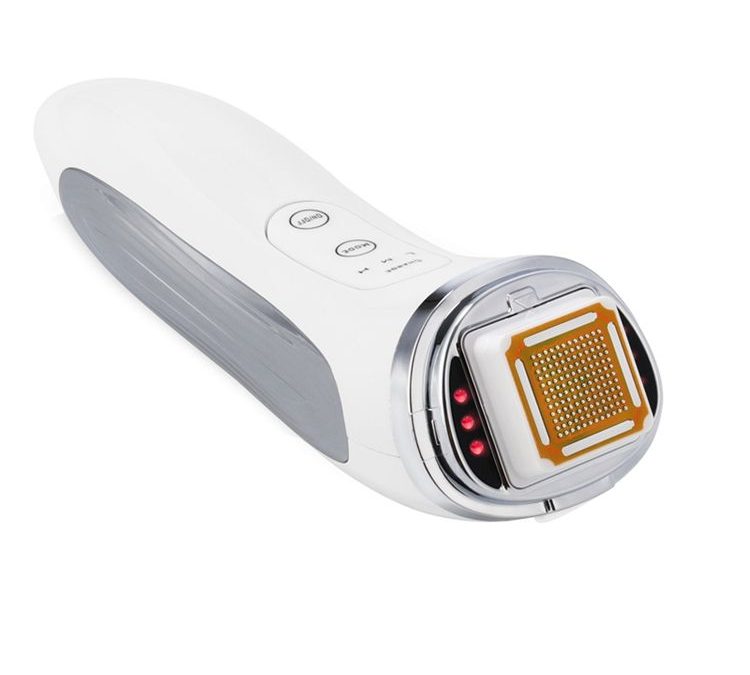Thermage treatment radio frequency skin tightening Machine SC114
Thermage Skin Tightening Microneedling Radiofrequency Device LB238
Latest 20000 Shots 7D Thermage Face Lifting Device LB443
Would you like to look younger and healthier? Thermage skin treatment is something you should think about if you are.
Thermage is a non-invasive procedure that can help you to improve the appearance of your skin.
It’s suitable for people who want to reduce the visible signs of aging, such as wrinkles and lines. Thermage skin tightening treatment uses radiofrequency energy to stimulate natural collagen production in the skin.
It’s a proven, non-surgical alternative to facelifts, neck lifts, and other cosmetic procedures that require incisions.
Thermage therapy is a non-surgical procedure for treating aging signs that has received FDA approval.
It can help reduce the appearance of wrinkles, fine lines, and sun damage.
Thermage is also a good option if you’re looking for an affordable treatment that won’t take up much time or money in your busy schedule. The procedure takes just about one hour.
In this article, we will discuss how thermage is different from thermage flx, how thermage works, the benefits and side effects of thermage skin treatment, thermage cost, and many other things you need to know about this skin tightening treatment.
Let’s get started right away!
What is the difference between Thermage and Thermage FLX?
Thermage CPT was an upgrade over Thermage. Thermage FLX is the name of the most recent version of this technology.
Thermage FLX and CPT provide superior pain relief and cooling technologies (such as vibrations and blasts of cold air). Thermage FLX also delivers more heat in less time.
Treatment times with Thermage FLX are around 25 percent faster than with Thermage CPT thanks to the device’s bigger 4.0 cm tip (instead of 3.0 cm), which covers a wider surface area and has AccuRep Technology, which automatically adjusts the energy with each pulse.
According to thermage specialists, each technology has benefits. Thermage CPT, for instance, works best on the face even though it can be used to treat the entire body. Perfect for smaller regions and face characteristics is the 3.0 cm tip. With the use of subsurface heating, the exact eye tip of this device softens and firms up the skin on the upper and lower eyelids, lessens hooding, and smooths out crow’s feet and fine lines.
What to expect during a thermage procedure?
The handpiece is laid flat on the intended treatment spot during a thermage procedure.
You’ll experience a gentle vibration along with a heating feeling as the radiofrequency radiation permeates the dermal layers of your skin, accompanied by a cooling sensation.
The vibration and cooling reduce heat discomfort, but your provider should continue to check to make sure you’re not in too much discomfort.
While the face and neck only require 60 minutes of treatment time, body parts can require up to 90 minutes of treatment time. Simply treating the eyelashes takes 30 minutes.
How many treatments of Thermage do you need?
The majority of patients only need one treatment session, followed by maintenance sessions every six to twelve months.
Does Thermage really work?
Yes, it does. Since outcomes are greatly determined by the body’s capacity to generate new collagen cells, how effectively it works—the level of tightening it induces—can vary from patient to patient (and collagen synthesis reduces as you grow older).
How much does Thermage cost?
The average cost of thermage is $2,450. The number of areas you want to treat, the size of the treated regions, and the number of sessions you have will all affect the thermage cost. Health insurance does not provide coverage for cosmetic operations like this one.
Who is a good candidate for thermage skin treatment?
Thermage skin tightening therapy is best for people who have fine lines and wrinkles on their face and neck, as well as early indicators of sagging, such as hooding and drooping of the upper eyelids, crepey skin, crow’s feet, or modest jowls along the jaw. It is also for people who have a little bit of loose skin on their bodies.
Benefits of thermage therapy
Here are some of the benefits of thermage therapy:
1.No anesthesia or pain involved during treatment.
2.People with slightly sagging skin may find Thermage skin tightening to be a useful alternative.
3.No downtime is needed after treatment.
4.With minimal downtime, it can eliminate skin sagging in only one treatment session.
5.It takes care of wrinkles and fine lines that come with aging.
6.Every skin tone and type is eligible for this treatment.
7.Results from a Thermage procedure might persist for years and get better with time.
8.It is non-invasive. Surgery or injections are not necessary for thermage therapy.
9.One thermage treatment session happens between 30 and 60 minutes and most of the time, that’s all that is needed to provide the desired outcomes
Does Thermage hurt?
No, it doesn’t hurt. The Thermage procedure is largely painless. You’ll feel vibrations coming from the therapy device during the treatment; these have been found to reduce pain.
A brief warm sensation will also be felt when the device meets your skin. Soon after, there is a cooling sensation.
You should just have a slight amount of tenderness where the treatment was administered.
Is Thermage safe? What are the side effects?
Thermage skin treatment is safe. But it has certain side effects that may be harmful to your skin especially if a novice carries out the treatment on you.
Here are some of the side effects of thermage therapy:
Up to a month following your thermage treatment, you may notice some irregularities on your skin’s surface.
For a few weeks following treatment, tingling or numbness in the treated region is possible.
When the top layer of your skin becomes excessively heated, burns, blisters, or scabs may develop. This occasionally causes scarring.
It is common for lumps or nodules to appear in the neck, but they normally disappear on their own in two weeks.
Risks include hyperpigmentation as well. It might go away on its own in a few months, but it might stay longer and need more therapy to get rid of.
Going to a board-certified dermatologist, plastic surgeon, or other trained practitioner is worthwhile because your outcomes and safety will much depend on how your specialist carries out the thermage procedure.
What results can you expect after one thermage treatment session?
After just one session, your skin will become smoother, tighter, and more contoured around the treatment region. Your skin may change right away, but as your body creates more collagen over time, your results will continue to advance and get better.
How soon will you see Thermage results?
Some people experience mild tightness right after thermage therapy.
Once new collagen has formed, the full results of Thermage skin tightening should be apparent three to six months later.
What areas can I treat with Thermage?
Both the body and the face can benefit from using thermage treatment. This applies to any location where you have loose skin, such as the area around your thighs, eyes, abdomen, neck, buttocks, knees, and arms.
How long does Thermage results last?
Results from thermage normally last for 12 to 24 months. Your aging process and how well you take care of your skin will determine how long your results will last. To sustain your results over time, some doctors advise getting maintenance treatments every six to twelve months.
To keep your skin in the greatest condition, it’s also essential to use sunscreen every day that has an SPF of at least 30 and to adhere to a clinical skin-care routine.
Thermage vs. Ultherapy: What’s the difference?
Thermage and Ultherapy are both popular non-surgical treatments that can help you get rid of wrinkles, lines, and folds on your face. While they’re similar in many ways, they also have some key differences.
Thermage uses radiofrequency energy to heat the tissue in the deep dermis and tighten it up, which can reduce the appearance of wrinkles and fine lines over time. Ultherapy uses ultrasound waves to stimulate collagen production, which helps fill out sagging skin and smooth out wrinkles over time.
There are other differences between these two treatments as well:
Thermage is less invasive than Ultherapy. You won’t need anesthesia for Thermage, but you may need local anesthesia for Ultherapy. Thermage has a shorter recovery time and less bruising than Ultherapy does. But most patients give Ultherapy a higher Worth It Rating than Thermage.
What are the alternatives to Thermage?
The most popular alternative to Thermage is Ultherapy—a non-invasive ultrasound treatment that uses ultrasound energy to stimulate collagen production
Other alternatives to Thermage are ThermiTight, SkinTyte, Sofwave, and Pellevé.
Conclusion
Thermage is a non-surgical procedure that uses radiofrequency energy to tighten loose skin and reduce the appearance of fine lines and wrinkles. Thermage is a less invasive alternative to other cosmetic procedures.
The result of Thermage can last up to 24 months and beyond, depending on your skin type, age, and lifestyle habits. You may notice an immediate improvement in the appearance of your skin after your treatment; however, optimal results may take several weeks or months.
Thermage is safe for all skin types but does have some minor side effects similar to those experienced after any type of cosmetic procedure: redness, swelling, and temporary bruising at the treatment site.
These side effects will subside within 24 hours after your treatment. To minimize these side effects you can apply ice packs before and after each session.
The good thing about thermage skin treatment I that it is FDA-approved.

